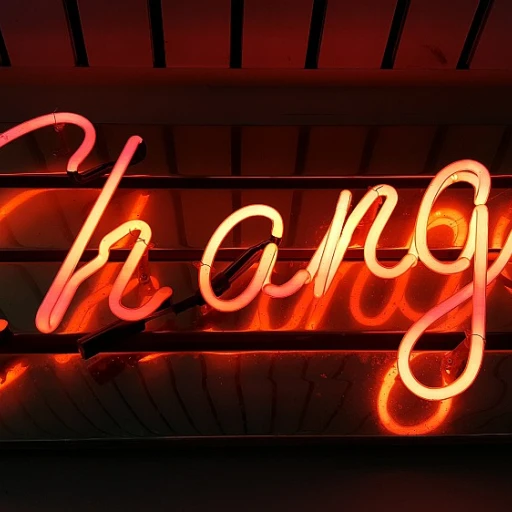
Understanding High Potential Employees
Recognizing High Potential Employees
High potential employees are those who demonstrate the capability to grow and succeed in leadership roles within an organization. They possess a unique blend of skills, motivation, and the ability to adapt to new challenges. Identifying these individuals is crucial for any company aiming to build a strong talent pipeline. By focusing on their professional development, organizations can ensure sustained growth and innovation.
These employees often exhibit exceptional performance and a strong desire for personal and professional growth. They are not just high performers but also show the potential for future leadership roles. Recognizing them involves assessing their current skills, work ethic, and the ability to take on more complex responsibilities over time.
Characteristics of High Potential Employees
- Leadership Skills: They often display natural leadership abilities, making them ideal candidates for future management roles.
- Adaptability: These employees can quickly adjust to new situations and challenges, showcasing their problem-solving skills.
- Motivation for Growth: A strong desire for career advancement and personal development is a hallmark of high potential employees.
- Effective Communication: They possess excellent communication skills, essential for team collaboration and leadership.
Understanding these characteristics can help organizations set effective developmental goals that cater to the unique needs of high potential employees. By doing so, companies can foster an environment that encourages innovation and creativity, ultimately leading to long-term success.
For more insights on building a strong talent pipeline, consider exploring strategies for success.
The Importance of Tailored Developmental Goals
Tailoring Goals to Individual Needs
Setting tailored developmental goals for high potential employees is crucial for their growth and professional advancement. These goals help ensure that each employee receives the appropriate resources, mentorship, and challenges needed to enhance their skills effectively. The key to managing such personalized objectives lies in understanding the unique capabilities and areas for improvement of each employee. Through this approach, the organization can align individual aspirations with organizational objectives.Balancing Short and Long Term Objectives
It's vital to maintain a balance between short and long term goals when developing effective strategies for these employees. Short term goals work well for building immediate skills like time management or communication skills, which can significantly impact current performance. On the other hand, long term objectives might focus more on leadership capabilities or innovation, essential for career growth and advancement within the company. Whether practical skills in project management or fostering a personal development interest in public speaking, these objectives should challenge employees yet be attainable within given time frames.Inclusive Decision-Making
Involving employees in the goal setting process not only enriches their work life but also boosts their commitment. By participating in setting their goals, employees are empowered to shape their career paths, leading to a more satisfying professional journey. Performance goals can thus be adjusted to match both the employee’s aspirations and the company’s strategic needs, ensuring alignment and fostering a culture of mutual growth. Be sure to explore effective strategies for setting development goals for high potential employees for more insights on this topic, providing further steps to enhance goal setting practices for thriving environments where every high potential employee can reach their full potential.Regular Reviews and Updates
Regularly reviewing and updating goals is necessary to cater to evolving professional landscapes and personal growth. As employees achieve their milestones, they are better equipped to tackle more complex tasks, thus requiring new objectives to be set. This iterative process ensures continuous development and helps keep high potential employees engaged and motivated. Ultimately, tailored developmental goals serve as a roadmap to achieving excellence in both personal and professional spheres, benefiting individuals and their organizations alike.Examples of Developmental Goals for Skill Enhancement
Skill Enhancement through Targeted Development
For high potential employees aiming to excel in their professional journey, establishing developmental goals centered on skill enhancement is crucial. While the broad strokes of professional development may remain consistent across various roles, the specific skills targeted should often be tailored to individual career paths and current performance levels.
Examples of Developmental Goals
- Time Management: Balancing multiple tasks effectively is essential for career growth. Employees can set short term goals to prioritize tasks using tools and strategies that streamline daily workloads. This skill not only boosts personal productivity but also aids team efficiency.
- Communication Skills: High potential employees should focus on enhancing both verbal and non-verbal communication. Workshops or courses in areas like public speaking and active listening can significantly contribute to professional growth.
- Project Management: Developing skills in organizing, directing, and overseeing tasks is vital. Taking on leadership roles in small projects can provide practical experience, preparing employees for larger management responsibilities.
- Problem Solving: Encouraging innovative thinking requires a solid foundation in problem solving. Employees can set goals to approach challenges methodically, fostering a mindset conducive to creative and effective solutions.
Setting these goals not only supports professional growth but aligns with broader organizational objectives. Through thoughtful goal setting and active management, these initiatives can lead to significant career advancement. For more insights into effective leadership experiences for high potential employees, the blog post here offers additional strategies and examples.
Fostering Emotional Intelligence and Soft Skills
Enhancing Emotional Intelligence and Soft Skills
When evolving high potential employees, their technical proficiencies should not be the sole focus. It is equally crucial to concentrate on their emotional intelligence (EI) and soft skills. These abilities play a vital role in effective work management, leadership, and building a cohesive team dynamic. Moreover, they significantly contribute toward personal development and career advancement.
Emotional intelligence, in particular, equips employees with the awareness necessary to navigate professional relationships adeptly, respond to colleagues' emotional cues, and manage personal stressors effectively. This capability, combined with a robust set of soft skills, can enhance an individual's capacity for empathetic leadership and efficient time management.
Setting developmental goals focused on EI and soft skills prepares employees for various challenges they might face in their professional journey. These goals can also enhance communication skills, leading to improved project management and performance goals. Furthermore, attention to these areas supports the establishment of a healthy work-life balance while underpinning the individuals' overall growth and long-term professional development.
Soft skills training often encompasses modules on collaboration, problem-solving, and public speaking. Unlike role-specific skills, these can apply across various situations throughout an employee's career in both short term and long term settings. A strategic approach to this aspect of development will help employees realize their full potential, leading to sustained personal and organizational success. Remember that investing time in setting thoughtful development goals can significantly boost the performance and confidence of high potential employees.
Encouraging Innovation and Creativity
Encouraging Breakthrough Ideas
In today's dynamic business environment, fostering innovation and creativity among high potential employees is crucial for their personal and professional development. Encouraging breakthrough ideas is not merely about thinking outside the box; it involves nurturing a mindset that embraces innovative thinking and problem-solving skills. High potential employees often exhibit an intrinsic motivation to explore new horizons. By setting specific developmental goals tailored to spark creativity, organizations can enhance their capacity to generate groundbreaking ideas. These goals may include participating in cross-departmental projects, attending industry-leading workshops, or engaging in creative brainstorming sessions which can effectively fuel their creative potential. Moreover, managers can encourage professional growth by setting goals that challenge employees to take on roles outside their comfort zone. This could be a leadership role in a project or spearheading a team tasked with developing unique solutions to existing challenges. Such initiatives not only promote personal development but also enhance employees' confidence and capability to drive innovation. Creating a culture that values diverse perspectives is essential for fostering innovation. Encouraging open communication and active participation can lead to the development of unique ideas. Integrating feedback mechanisms ensures that employees feel valued, thereby motivating them to contribute innovatively. Additionally, recognizing and rewarding creative efforts is vital in maintaining a culture of innovation. Employees should feel that their contributions are appreciated, which in turn encourages continuous input of novel ideas and efforts towards long-term performance goals. To sum up, setting intentional development goals aimed at cultivating creativity is a key strategy in nurturing high potential employees who are capable of contributing significantly to the organization. In doing so, companies facilitate not only the individual growth of their employees but also support the overall advancement of the organization.Measuring Success and Adjusting Goals
Evaluating Progress and Tuning Developmental Strategies
Effectively setting developmental goals for high potential employees is just the beginning. To truly aid their growth journeys, it’s crucial to regularly assess their progress and make necessary adjustments. This practice not only enhances career advancement but also ensures that the goals set remain relevant and achievable. The assessment phase involves regular check-ins with employees, offering an opportunity to discuss successes and challenges. Open communication between employees and their leaders is vital in identifying any roadblocks and making strategies to overcome them. When evaluating performance, consider these crucial elements:- Performance Goals: Assess whether the short-term and long-term goals are being met as planned. Performance evaluations should focus on how effectively an individual is using their new skills and knowledge in their work tasks.
- Skill Enhancement: Measure the employee's growth concerning the skills they're developing, whether they relate to communication skills, leadership, or project management.
- Feedback and Adjustment: Use feedback from multiple sources including peers, managers, and the employees themselves to gauge performance. Use this feedback to fine-tune developmental goals to better align with both the company's objectives and personal career aspirations.
- Personal Development Progress: Track personal and professional development alongside set benchmarks. Are employees effectively managing their work-life balance or time management? These insights are vital for sustained professional growth.












